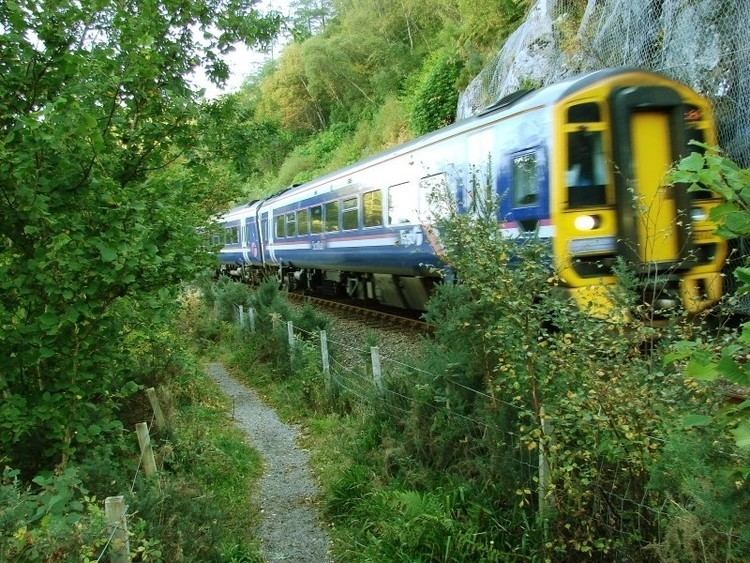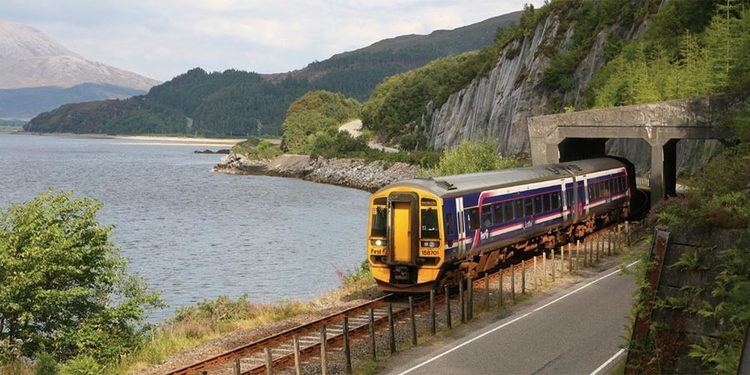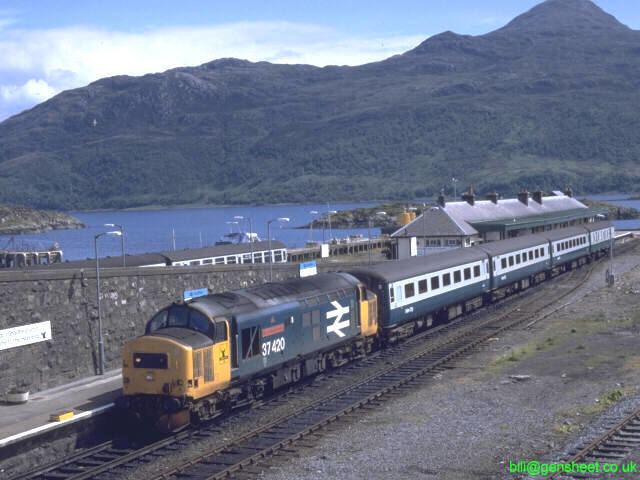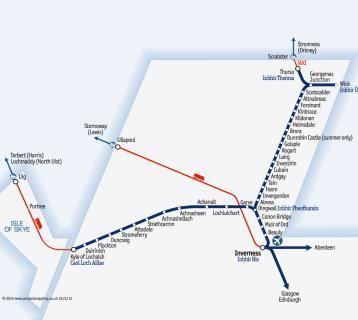System National Rail Operator(s) Abellio ScotRail Rolling stock British Rail Class 158 Stations 13 | Status Operational Owner Network Rail Locale Highland | |
 | ||
Track gauge Standard gauge 1,435 mm (4 ft 8 ⁄2 in) Terminis Kyle of Lochalsh railway station, Dingwall railway station | ||
55022 royal scots grey at kyle of lochalsh
The Kyle of Lochalsh Line is a primarily single track railway line in the Scottish Highlands, running from Dingwall to Kyle of Lochalsh. Many of the passengers on the trains are tourists but one can also expect to meet locals visiting Inverness for shopping, and commuters. All services are provided by Abellio ScotRail and run to Inverness. Most services run to or from Inverness; one daily train runs beyond Inverness to Elgin (in the current 2016 timetable) having in the past come from Glasgow, Edinburgh or Aberdeen. No section of the line is electrified and all trains on the line are diesel-powered, as are all other trains in the Scottish Highlands.
Contents
- 55022 royal scots grey at kyle of lochalsh
- History
- Cascaded Rolling Stock
- 200708
- From December 2008
- Route
- Kyle of Lochalsh Line in film and books
- References

History
The route was built in three sections:

Latterly the Strathpeffer Branch operated between 1885 and 1951.

In the 1960s the line was listed to be closed under the Reshaping of British Railways report, however it was reprieved and services continued.

In 1989 the bridge over the River Ness at Inverness was washed away, leaving both it and the Far North Line stranded, but new "Sprinter" trains were brought over by road, and a temporary yard was built to service them at Muir of Ord. The section of line along Loch Carron is particularly troublesome and prone to landslides, often closing that section.

Whilst undeniably a rural line, a historic term in the Act of Parliament for the railways here and around Inverness means that one through service per day is operated over the line towards Aberdeen (see above), whereas all other services start and finish at Inverness.
Cascaded Rolling Stock
From 1999 onwards, the then ScotRail operator, National Express, began the removal of the Class 156 "Sprinter" trains. Their replacement was to be the faster, higher standard Class 158s. These trains offered a better all round travelling experience, with air conditioning, improved speed, lighting, seating, storage and general comfort. There is now a dedicated fleet of Class 158 units based at Inverness serving the Kyle of Lochalsh line, the Far North Line to Wick and Thurso, and the Aberdeen to Inverness Line. The next franchise owner First ScotRail had continued the current situation, with improvement to the depot facilities at Inverness.
2007/08
During the winter months there are three, generally 2 car services, per day in each direction, with no Sunday services. During summer months, Monday to Saturday services increase to four in both directions, mostly running as 4 cars, with two services in each direction on a Sunday.
From December 2008
As of December 2008 service enhancements have meant the introduction of four daily trains all year round, Monday - Saturday.
Route
The stations on the line that have passing loops are Muir of Ord, Dingwall, Garve, Achnasheen and Strathcarron. Only Dingwall and Kyle stations are staffed, however all stations along the route have lighting and passenger information posters with train timetable details. Most have passenger information telephone points fitted so that remote customer service staff can be contacted. Normal office hours apply. Along the route there are 29 bridges and 31 cuttings.
Kyle of Lochalsh Line in film and books
The Kyle of Lochalsh Line was featured in Eddie McConnell's lyrical documentary The Line to Skye (1973) with commentary by Scottish writer William McIlvanney, commissioned as part of Ross & Cromarty's campaign to keep the line open at a time when it was threatened with closure. The film follows the train from Inverness to Kyle of Lochalsh, describing the communities, landscape and wildlife along its route, while contrasting the frustration of motorists with the relaxation of the journey by rail.
In Stephen Durrell's 1939 documentary West of Inverness, the importance of the Kyle of Lochalsh line to the crofters of the West Highlands is demonstrated through its role of transporting passengers, mail, parcels, food and livestock to and from their communities. The film shows the LMS steam locomotives that operated the line at this time.
In the episode of Great Railway Journeys of the World "Confessions of a Trainspotter" (1980), Michael Palin travels from London to the Kyle of Lochalsh and returns with the railway station's sign.
Video 125 Ltd. produced a driver's eye view documentary of the line in 1987, when the service was still operated using loco-hauled trains, in this case motive power being provided by Class 37 no. 37262 named "Dounreay" after the nuclear power station. Narration was by Paul Coia.
Nicholas Whittaker travelled the line both ways during the summer of 1973, an experience he wrote about in his 1995 book Platform Souls.
As with the other railway lines of the western Highlands (the West Highland Railway and the Callander and Oban Railway), John Thomas wrote a comprehensive and highly readable history, "The Skye Railway".
